Learn
Changes in Europe
Crusades
Between the 11th and 13th centuries in Europe, several military expeditions attempted to recapture the "Holy Land" of Jerusalem from the Muslims. The Roman Catholic Church encouraged these expeditions, which were known as the Crusades. They lasted from 1096-1270. Technically, the Crusades were a failure, as European Christians did not recapture the Holy Land. However, the Crusades had a lasting impact on exploration and, eventually, colonization.
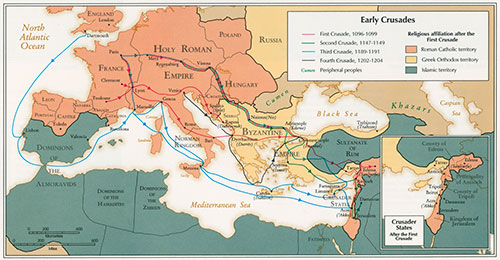
The Effects of the Crusades:
- There was an increased interest in literature and the arts as a result of exposure to new cultures.
- As a result of the new demand for luxury goods like silk and spices, trade increased between Europe and the East.
- European technology improved. They used better navigational tools like the magnetic compass, built better ships, and improved their military skills.
- The power of kings increased and nation-states began to grow, as the old medieval system of feudalism began to break down.
Renaissance
The Renaissance (which literally means "rebirth") began in Italy in the 1300s and spread to the rest of Europe throughout the 1400s and 1500s. This period was characterized by new interest in art, literature, trade, geography, and new innovations. People in Europe began to think about life beyond their own continent.
One of the key inventions during this period was the printing press invented by Johann Gutenberg of Germany that allowed books and pamphlets to be mass produced. This invention increased access to knowledge throughout Europe.

Reformation
The Reformation occurred in Europe in the early 16th century when Martin Luther questioned some practices of the Catholic Church. In 1517, Christianity split into two branches Catholics and Protestants in an event known as the Protestant Reformation.
As a result of the Reformation, some Europeans sought religious freedom in the New World, leading to exploration and the foundation of new colonies.
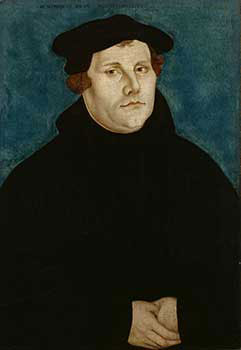
Age of Exploration
How did events in Europe lead to the exploration and colonization of the Americas?
- Crusades → lead to → an exposure to new goods and the rise of new nation-states
- Renaissance → lead to → increased technology and innovation, like better navigational devices
- Reformation → lead to → exploration and foundation of new colonies out of a desire for religious freedom
Spanish Explorers
Through the Treaty of Tordesillas of 1494, Pope Alexander VI divided all non-Christian lands between Spain and Portugal. Spain would control the Western Hemisphere and Portugal would control the Eastern Hemisphere.
By the early 1500s, Spain had claimed a large portion of South America and part of North America. Spain used colonization to build wealth at the expense of Native Americans that they enslaved. They were the most dominant power in the Americas until their rival, France, began settling in present-day Canada in the early 1600s.
Columbus Was Spanish, Right?
Technically, the most famous Spanish explorer was Christopher Columbus, but Columbus was actually Italian – he was sailing under the Spanish flag. Columbus and his crew sailed in August of 1492 headed for Asia and its gold and spices. However, Columbus sailed west, thinking he could reach Asia this way.
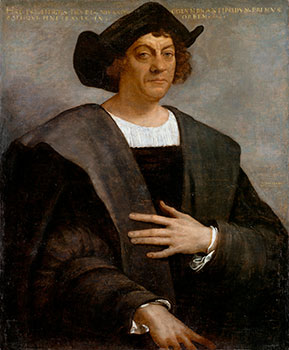
In October of 1492, Columbus and his crew reached San Salvador (present-day Bahamas) and mistakenly believed they had reached Asia. Since he thought he was near India, he called the natives he encountered "Indians". At that time, native Lucayan people inhabited the Bahamas, but all of them were forced into slavery and removed by 1520. In their native Taíno language, the island of San Salvador was called Guanahani, meaning "sweet and gentle".
Although Columbus made four voyages and is credited with "discovering America," he never actually set foot on the mainland of North America.

Conquistadors
The Spanish explorers were called conquistadors because they sought to conquer native tribes and claim new lands with three main motives:
- God: to spread Christianity to native peoples,
- Gold: to add to Spain's wealth, and
- Glory: to become famous and receive praise for their conquests.
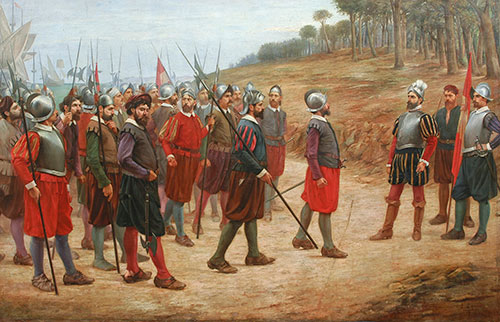
Other famous Spanish conquistadors included:
- Hernando Cortés, who conquered the Aztecs in 1519; sometimes called Hernán Cortés
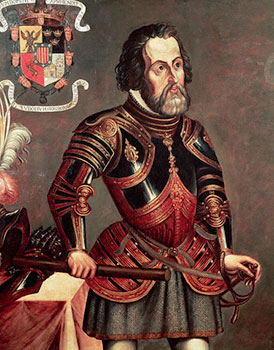
Hernando Cortés - Francisco Pizarro, who conquered the Incas in 1542
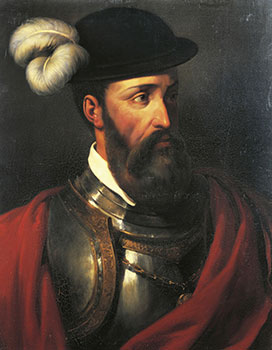
iFrancisco Pizarro - Juan Ponce de León, who discovered Florida while searching for the Fountain of Youth

Juan Ponce de León - Amerigo Vespucci, an Italian sailing under the Spanish flag who actually reached the mainland of the Americas. For this reason, America is named for him!
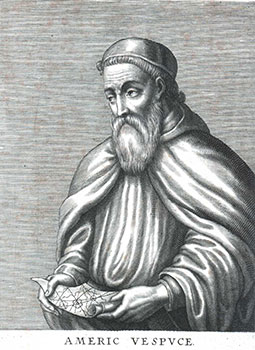
Amerigo Vespucci - Hernando de Soto, who explored the American Southeast, including Alabama and the Mississippi River

Hernando de Soto - Francisco Coronado, who explored the American Southwest in search of the Seven Cities of Gold
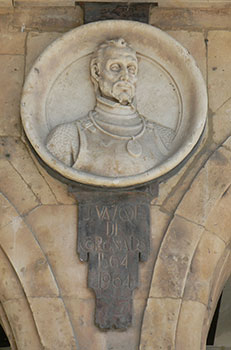
Francisco Coronado - Ferdinand Magellan, who was the first European to go around the world, but he died on the voyage

Ferdinand Magellan
Consequences
Although these explorations made Spain wealthy, their conquests were devastating to native populations.
The Spanish explorers carried diseases like smallpox that the natives were not immune to, and they also enslaved much of the native populations. The native population of Hispaniola Located southeast of Cuba and west of Puerto Rico, this island is divided into the Dominican Republic and Haiti today dwindled from nearly 1,000,000 to 22,000 in less than 20 years after Columbus arrived.
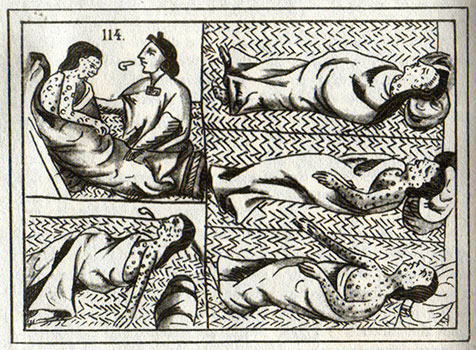
Other European Explorers
In addition to Spain, other European nations such as Portugal, France, and England also engaged in exploration. Some of the most notable explorers were:
- Bartolomeu Dias, a Portuguese explorer who reached the Cape of Good Hope at the southern tip of Africa in 1487
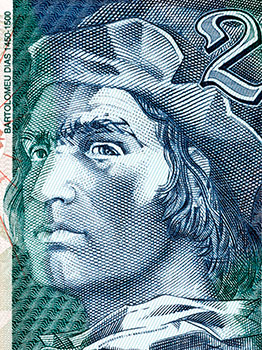
Bartolomeu Dias - Vasco da Gama, a Portuguese explorer who sailed around the continent of Africa and was the first explorer to sail to India in the late 15th century
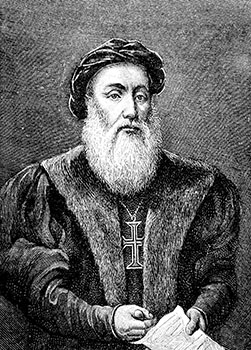
Vasco da Gama - Jacques Cartier, a French explorer who explored the St. Lawrence River, which connects the Great Lakes to the Atlantic Ocean in North America
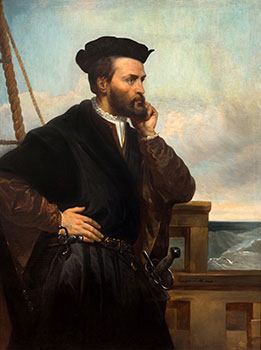
Jacques Cartier - Samuel de Champlain, a French explorer who founded Quebec, Canada, established a colony in Acadia, and was known as the "father of New France"

Samuel de Champlain - John Cabot, an English explorer who searched for the Northwest Passage – a supposed water route that connected the Atlantic Ocean and Pacific Ocean, but does not exist – in 1497
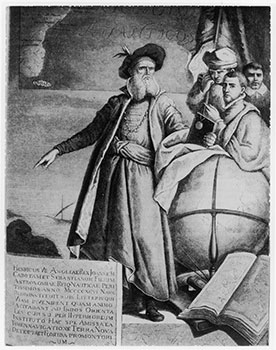
John Cabot
Here are some of the 16th century Portuguese (shown in blue) and Spanish (shown in white) trade routes that were developed by these explorers during the Age of Discovery.
